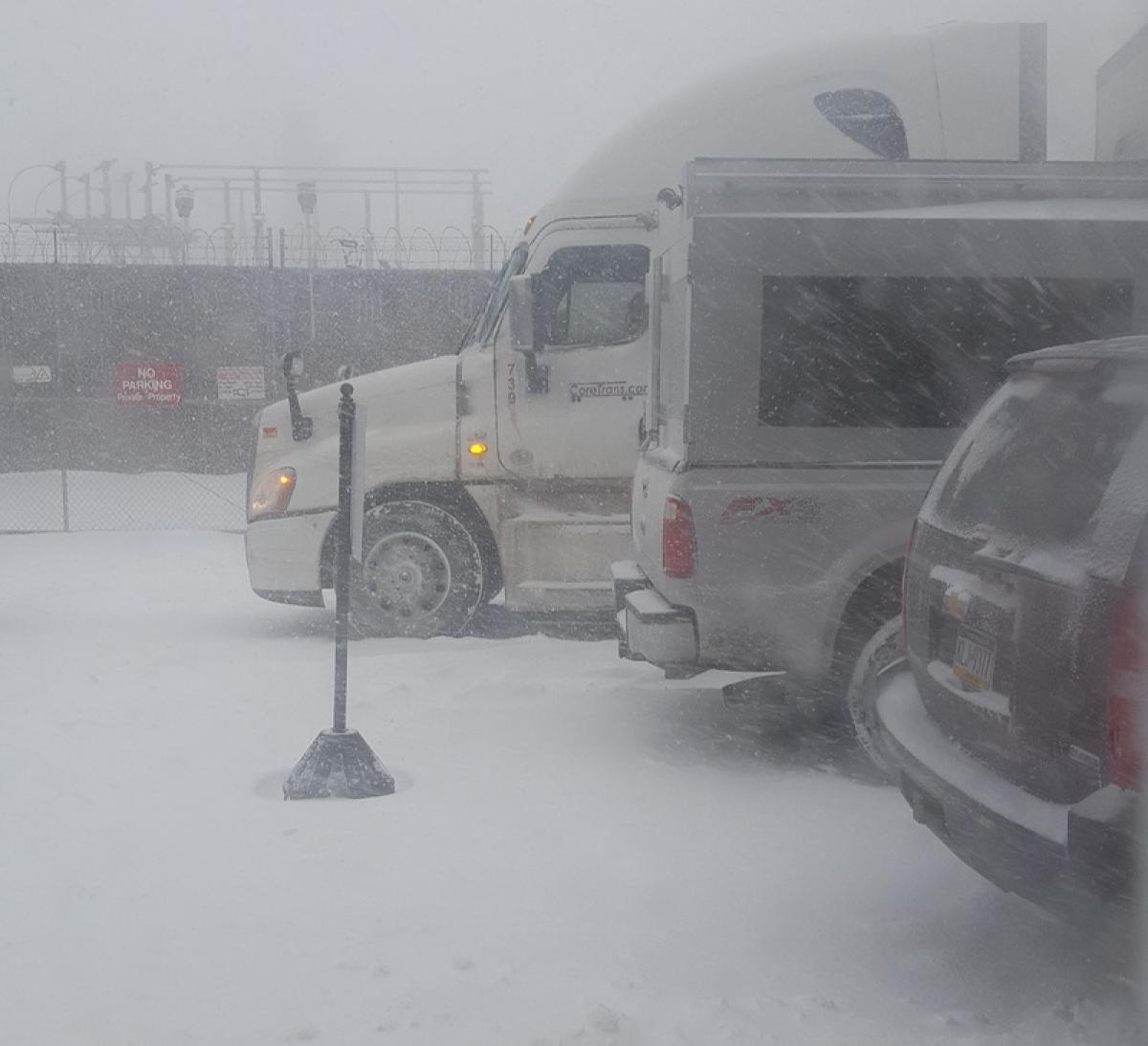
The temperature has been varying between really cold and OMG cold since the New Year, and unfortunately our indoor work temperature has reflected this. Our steel roll-up garage-style showroom door and super-high ceilings are major escape routes for heated air and our three gas powered reflecting heaters barely make a dent.
Are we part of a "proud" historic tradition? Amazingly, in days of yore cabinet shops in Europe and US, even in dank and chilly parts, were not heated.
Let's think about this for a bit. Iron stoves date from the mid 18th century, commonly available central heating from the end of the 19th. Light was essential for craft work, but glass windows were not common in Britain and the US prior to the middle of the 19th century. In the spring, summer and fall, craftsmen worked in front of open windows - a source of light and air. Rain was kept away by roof eaves. In the winter and in truly inclement weather, translucent oiled cloth over the windows gave some protection from the elements. Shutters secured the premises at night and when there was no work.
While fine sawdust from sandpaper wasn't much of an issue before the 20th century, sawdust from sawing and plane shavings did present a constant danger for a fire. And with all that dry wood around, any small fire could easily become a deadly conflagration. Thomas Chippendale's shop, for example. burned in a fire in 1755; although he rebuilt his shop, his personal fortune never recovered from the disaster. And so unlike those lucky blacksmiths who had forges and bakers who had ovens, woodworkers had to exercise extreme caution around fire. Even smoking was generally banned anywhere near the shop. Open fires of any sort were forbidden in shops -- and with that, no ready source of heat was available in shops.
Even in the 18th century, there must have been some small fires to keep the glue hot. The Joiner and Cabinetmaker (1839) describes the apprentice's job of preparing and maintaining the glue pot and makes note of the "serious accidents [that] have sometimes arisen" with improper care, such as when a "hot cinder sticking to the bottom has set the shavings and the shop on fire."
With the advent of iron stoves, it was possible to have some heat in a workshop. But the lack of insulation in the shop, and the probability of working next to the outdoor light meant that on a good day your back might have some heat on it but your front and hands would be freezing.
Fortunately, in the winter the workdays bowed to the reality of shorter daylight and were shorter too.
The funny part of all of this is that at the end of my workday I ride on a (mostly) heated subway and a centrally heated home. Up until pretty recently your frozen cabinetmaker went home to a house probably heated only by a fireplace in the kitchen and parlor. If he was lucky and well-to-do, maybe his bedroom had a small fireplace, but by and large, your workplace might have been freezing and your home was pretty cold too.
And don't get me started about the plumbing.
|
 Joel's Blog
Joel's Blog Built-It Blog
Built-It Blog Video Roundup
Video Roundup Classes & Events
Classes & Events Work Magazine
Work Magazine



Overall I like the pace this sets. I'm not running a business, so I can afford to be flexible. During the coldest periods I do more reading or work on restoring a vintage plane at the kitchen table. It makes me more connected to the weather. It's all too easy to sit inside, thermostat set to t-shirt temps, no matter how the weather fluctuates outside. Now I look more closely at upcoming temperatures and look forward to a warmer day, and don't let a single one go to waste.
The biggest surprise is I thought woodworking would come to a halt for about five months during our northern mountain winters. Turns out I can get decent work done nearly year round.
Now I have a workshop! It's an attached garage in Massachusetts. As a garage it's well-ventilated. It's usually 15 to 20 degrees F warmer than outside. Rain and powerful winds are no longer a problem. I can recreate noonday sunlight at any hour of the day. So that's all good.
As for those really chilly days I recall a bit of Norwegian wisdom. Norway? They have some of the worst weather in the world. No problem. As they say, there is no bad weather, just bad clothing.
Fortunately, he managed to get back on his feet, and was awarded a medallion at the Crystal Palace Great Exhibition for constructing a wagon wheel using Australian native timbers, instead of imported UK timbers - as was the practice in the day).
What are you watiing for? Come on over!
I know there are ways to prepare for this and mitigate against its effects, but it is a fairly big undertaking - one of many that deserve my attention.